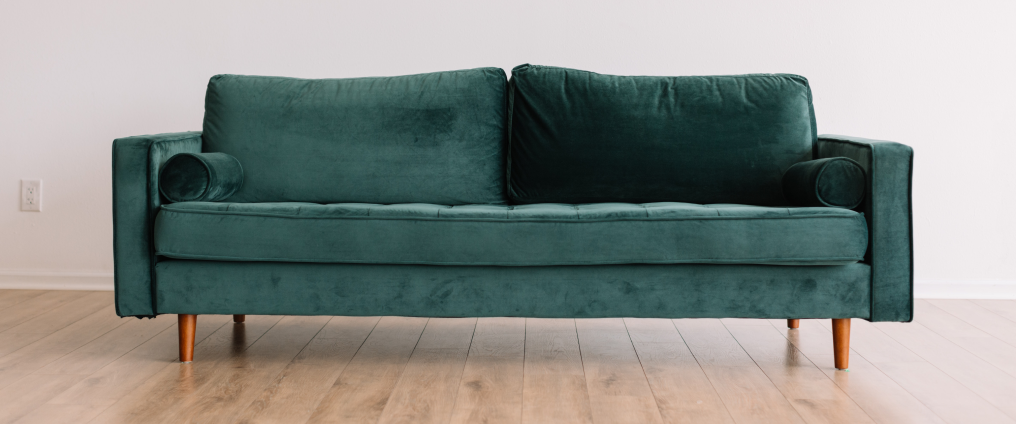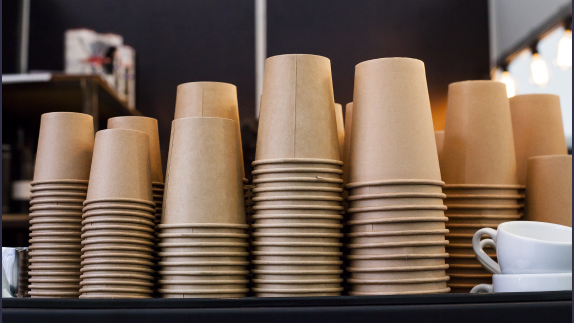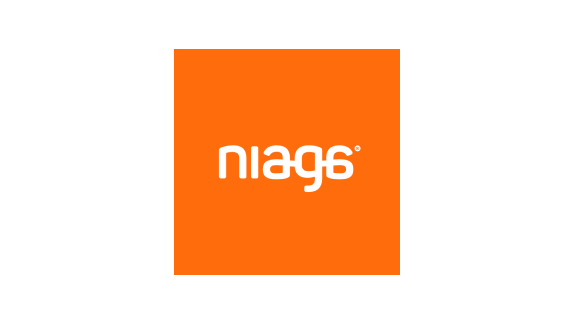
The challenge
Medium-life ‘bulky’ products (MLBPs), like carpets and mattresses, are difficult to recycle and contain more toxic chemicals than you could imagine. Because of this, the product category is a large contributor to landfill and is a risk to human health and the environment.
The solution
Niaga®️ has developed three circular design principles which underpin the development of production technologies for a new generation of medium-life products. All products made with Niaga®️ Technology, can be recycled back into the same product.
What makes it particularly circular?
To meet their recyclabilityrecyclabilityThe ease with which a material can be recycled in practice and at scale. promise, the company needed to design an adhesive that decouples on demand. Together with the use of non-toxic, easy recyclable mono-material components, the modular design also supports easy maintenance. This has enabled the use of new business models for these products.
The benefits
Medium-life ‘bulky’ products (MLBPs), like carpets, furniture, and mattresses contain a lot of material. Through the leasing of 100% recyclable products, a recycling industry could flourish, eliminating local waste issues and global demand for virgin materialsvirgin materialsMaterials that have not yet been used in the economy. at the same time.
The dirty mattress on the roadside
Everyone has seen one - damp and stained on the hard shoulder or abandoned on the edge of a field. Why would an item containing valuable materials end up being discarded in this way? Are we so rich that we can afford to throw away all this value, or is it just too expensive to recover these materials and turn them into a new product?
The story is similar for carpets. For more than 60 years commercial carpeting has been made the same way, a complex mix of chemicals bound together so that the materials are unrecoverable at the end of the product’s use. As a consequence, after a relatively short use period, a large amount of valuable materials are lost. Each year in the US, around 1.8 billion kilograms of carpet ends up in land-fill or incineration, with an estimated material value of USD 5 billion.
The primary reason for the wasteful product system, is that bulky items such as carpets and mattresses are not designed in a way so that materials can be recovered easily and economically. How can this linear status quo be shifted towards more circularity where waste is designed out and the materials are kept in use for longer?
Niaga®️, a company set-up as a joint venture between two entrepreneurs and the multinational DSM, and now owned by Covestro, was set up to deal with this innovation challenge.

In the US over 1 billion square metres of carpet are sold each year (Gaia)
Three design principles to unlock circular innovation
It all started with a fascination among the co-founders of Niaga®️, about how product innovation was dominated by constantly adding extra ingredients, to the point where nobody understood exactly what was in the products. This initial insight about the need to de-complexify inspired the two founders to develop a set of principles which would underpin all future products:
Keep it simple - use the lowest possible diversity of ingredients
Clean materials only - use only materials that have tested positive for impact on human health and the environment
Use reversible connections -connect different materials in a way that allows easy disconnecting at the end of each use phase
Applying these principles, Niaga®️ make products healthier and fully recyclable, without compromising on performance. All used materials can be decoupled after use. This is made possible through an adhesive that Niaga®️ has developed which can be reversed at a certain frequency or temperature. The separated pure materials can then be fed into the next manufacturing cycle.
Medium-life bulky products
So far Niaga®️ has targeted its efforts on the top 10 items found in landfill which often happen to be bulky with a typical use life of around 10 years. So far, they have found commercially scalable solutions (manufacturing technologies in their case) for mattresses, carpets, and furniture. They invite manufacturers of other top landfill items to join in a redesign effort, just like the mattress firm Auping did after a connection made via the Ellen MacArthur Foundation.
Fully recyclable carpets
The first product Niaga®️ took on was the carpet. As already stated, carpets are composed of a complex, tightly bound array of chemicals. In their pure form, many of these compounds are unsafe to humans, with an estimated 50 toxic substances present in European and US carpets, including carcinogens and mutagens. Because of the difficulties in separation and recovery, the material flow for carpets is wasteful and polluting with less than 1% of materials recycled into new carpets:
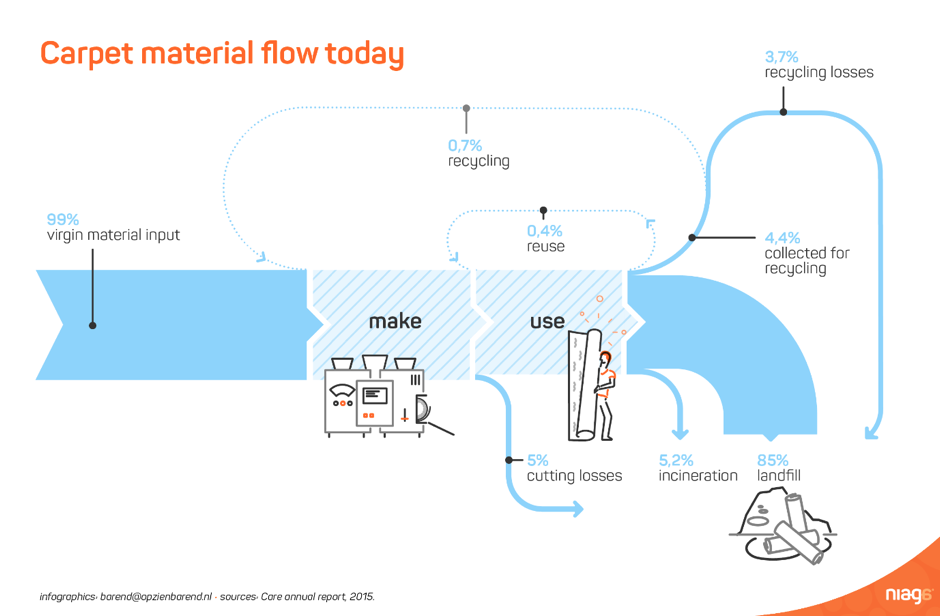
Niaga®️ has developed a carpet material which can be recirculated in an effective and economically viable way. The carpets are created out of single or simple combinations of materials, either pure polyester or a mix of polyester and polyamide, or wool. In the latter case, the two layers are bound together with a reversible adhesive. The holistic design means value is preserved and production costs are reduced for the next generation of carpet products.
There are other benefits, such as indoor air quality, through the elimination of carcinogenic, endocrine, and volatile organic compound emissions; as well as reduced water and energy resources in the production process. The new carpet is also lighter, making transport and handling easier. In early 2017, Niaga®️ partnered with Mohawk, the second-largest flooring maker in the US, and the first company to incorporate Niaga®️ system into its own production processes.
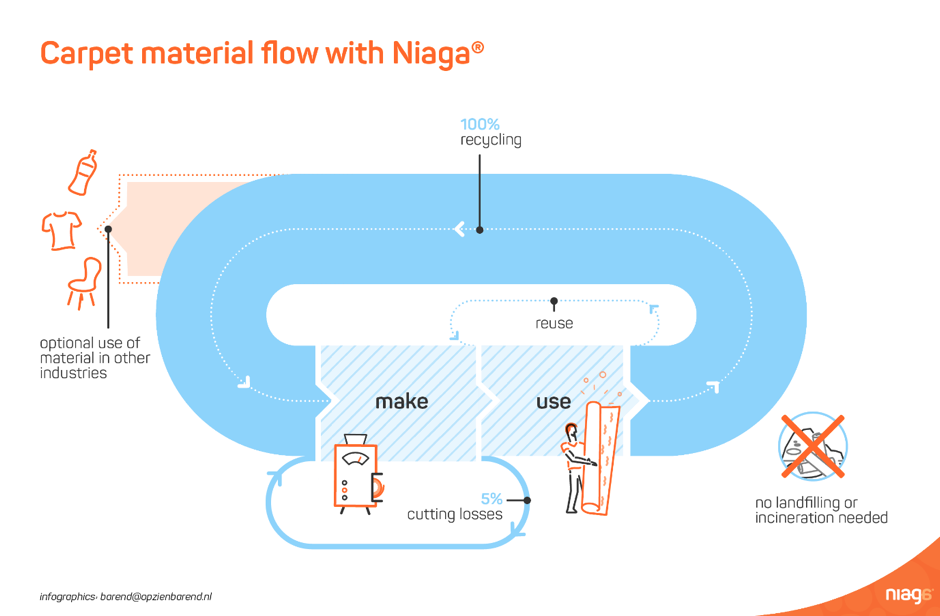
Every year, it is estimated that 35 million mattresses are disposed in Europe and 20 million are disposed in the US. Seeing a great opportunity to capture some of this lost value, Niaga®️ partnered with Auping a large Dutch mattresses manufacturer, to develop a modular and fully recyclable mattress.
A common argument to get rid of your mattress is that the comfort layer is worn out. Niaga®️-Auping’s modular mattress allows such components to be easily swapped.
The mattress is made from six components all of which can be replaced when comfort, hygiene or other factors demand (see image below). The components include: a comfort layer, springs, the backing material, zippers. All are designed to be easily separated and replaced through reversible connections like yarn, Velcro and Niaga's reversible adhesive.
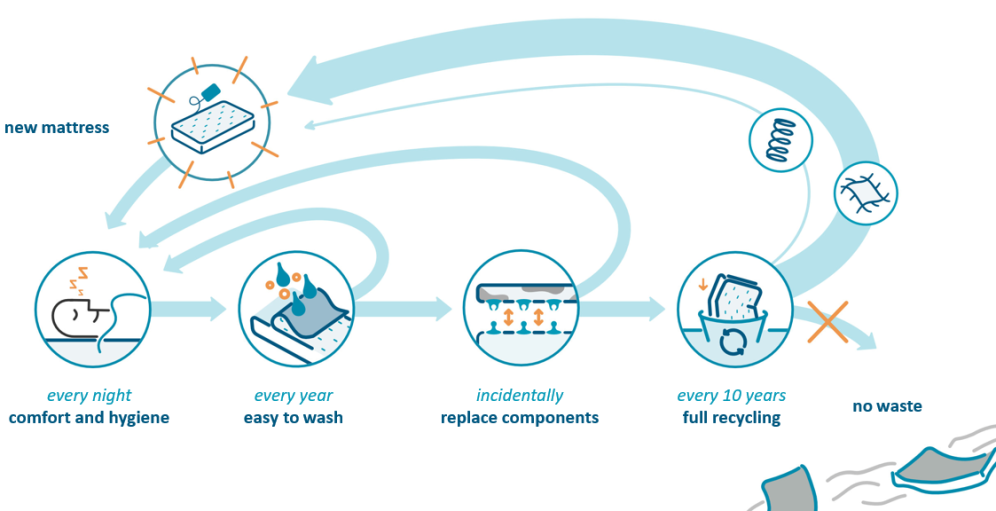
Auping offers the mattresses to hospitality and consumers via a product sale and lease option. The lease options include a maintenance contract for hospitality. This way, hotels are offered the option to only pay for the mattress when the bed is used, and all components will be washed and/or replaced when needed for quality or hygiene reasons. Consumers pay a fixed fee per month, and Auping will take the mattress back for recycling at the end of life.
Unlocking circularity in other product sectors
Niaga®️ are constantly exploring other product areas that could be transformed through the application of circular design principles. Most recently they have partnered with ECOR, to rethink the way that building materials are laminated, so that they can be easily disassembled and recycled. The partnership, focusing on particle board and panel materials used in furniture and construction, has already yielded the Niaga-ECOR Panel (photo below). The panels have laminated surfaces that can be easily 'un-clicked' using microwave frequency to separate panels from veneers, meaning the bulk of the material can be retained in multiple use phases.
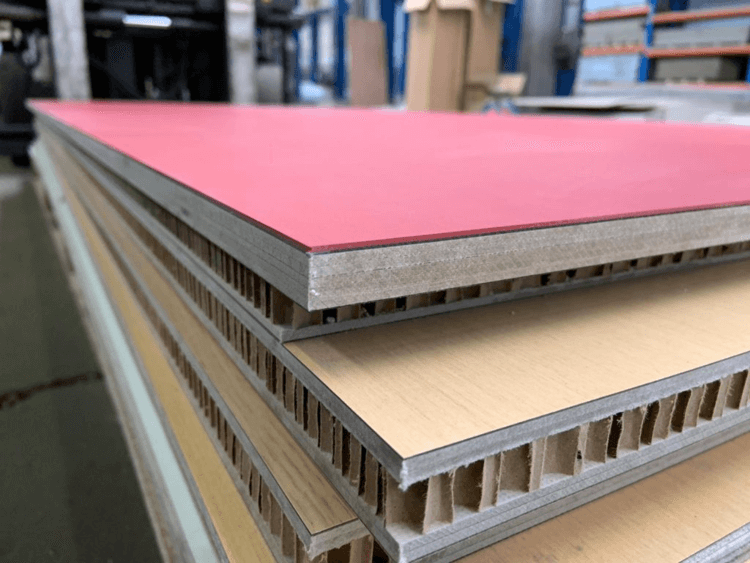
Niaga ECOR panel with easily removable veneers
Company info
Niaga®️ - the word 'again' spelled backwards
A joint venture between DSM and two entrepreneurs, owned by Covestro since April 2021
Based in, Geleen, The Netherlands
Grew from 6 to 40 employees between 2017 and 2019
Provides a B2B model, selling all required technologies and materials to manufacturers (e.g. Mohawk, Auping) - enabling customers to produce their own Niaga®️ products
